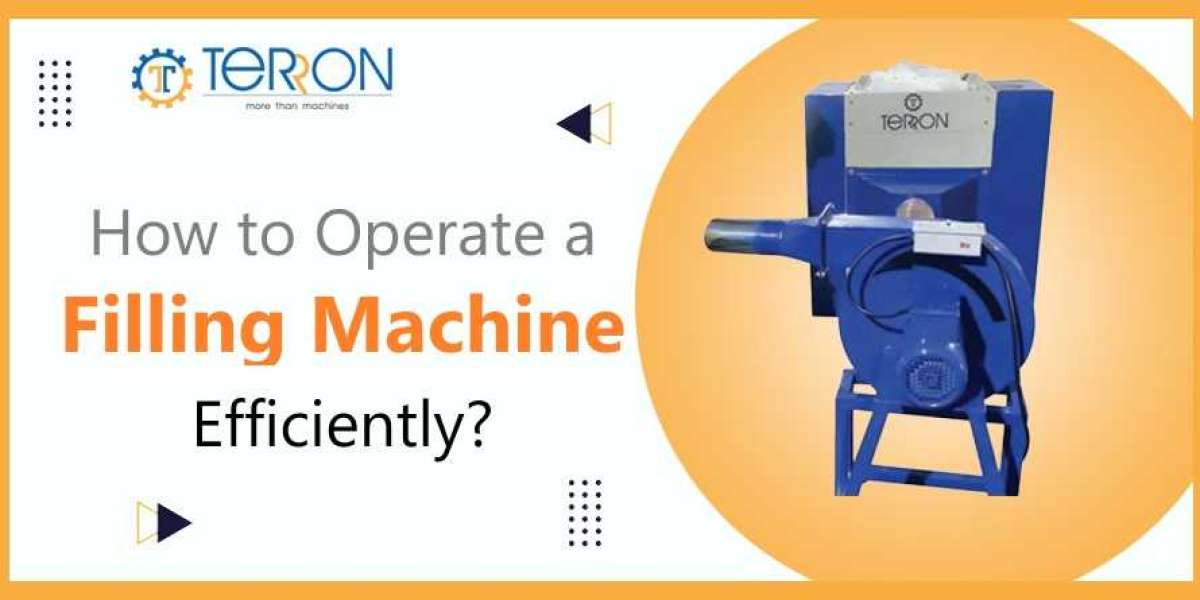In today’s fast-paced manufacturing environment, filling machines play a crucial role in packaging a wide variety of products, from liquids to powders. Efficient operation of these machines is essential to maintain high productivity while ensuring product quality.
Here is a comprehensive guide on how to operate a filling machine efficiently.
Understand the Machine Type
The first step toward operating a filling machine efficiently is knowing the specific type of machine you are working with. Filling machines come in various forms, including:
- Liquid Filling Machines – Ideal for filling beverages, oils, and other liquid products.
- Powder Filling Machines – Used for granular products like spices, pharmaceuticals, and chemicals.
- Paste Filling Machines – Suitable for thicker substances like creams and gels.
Each type of filling machine has its unique operational procedure. Ensure you are familiar with the machine's functions and settings before operation.
Prepare the Machine for Operation
Before starting, inspect the machine thoroughly to confirm everything is in proper working condition.
Follow these steps:
- Calibrate the machine according to the product type and packaging material.
- Clean the machine and ensure that all parts in contact with the product are sterilized, especially when dealing with food or pharmaceuticals.
- Check for leaks, loose components, or wear and tear that could cause malfunctions during the filling process.
Set Accurate Fill Levels
Efficiency in filling operations largely depends on accuracy. Setting the right fill levels ensures minimal wastage and consistency in product packaging. Most modern filling machines come with digital controls or adjustment dials.
Here's how you can fine-tune the machine:
- Adjust the fill volume according to the product being filled.
- Conduct test runs with a few sample containers to ensure the fill level is correct.
- Regularly monitor the accuracy of the fill levels during the operation to avoid product wastage or underfilling.
Optimize Speed Without Compromising Quality
It may be tempting to push the machine’s limits by increasing its speed, but efficiency is not solely about speed. A balance between speed and accuracy is crucial:
- Match the machine speed with the product and container type. Thicker liquids or paste products may require slower speeds.
- Monitor for any product spillage or overflows that may result from increasing the machine’s speed.
Monitor Machine Performance
To ensure a smooth and efficient operation, continuous monitoring of the filling machinery is key. Assign personnel to:
- Observe the filling process and ensure there are no interruptions or bottlenecks.
- Regularly check for clogged nozzles, especially in machines handling thicker products, which can lead to downtime.
- Inspect the conveyor belts, bottle holders, and other components to ensure that they are functioning smoothly.
Regular Maintenance and Cleaning
Efficiency isn't just about operating the machine correctly—maintenance plays a critical role in long-term performance. Routine maintenance practices include:
- Lubricate moving parts of the machine regularly to reduce friction and prevent wear and tear.
- Replace worn-out parts such as nozzles, seals, or belts to avoid unnecessary breakdowns.
- Clean the machine daily after operations to avoid product contamination and ensure hygiene compliance, particularly in the food and beverage industries.
Safety and Training
Safety is a critical aspect of operating a filling machine efficiently. Operators should be trained on:
- Following safety protocols such as wearing protective gear.
- Proper shutdown and start-up procedures to prevent accidents.
- Emergency response procedures in case of machine malfunctions or accidents.
Regular training ensures that operators are proficient in running the machine while adhering to safety standards.
Automate for Maximum Efficiency
If your cushion filling machine has advanced features such as automation, utilize them to enhance efficiency. Automatic filling machines reduce human intervention, lowering the chance of error and improving overall output. Consider:
- Programming the machine to perform tasks like filling, capping, and labeling.
- Using sensors to detect fill levels and trigger automatic adjustments for maximum precision.
Conclusion
Operating a filling machine efficiently requires a combination of understanding the machine, regular maintenance, optimizing speed, and ensuring safety. By following these guidelines, operators can enhance productivity, reduce wastage, and maintain consistent product quality.
At Terron India, we offer high-quality filling machines and expert guidance to help businesses streamline their packaging processes for optimal efficiency.
For more information about our products and services, visit Terron India’s official website or contact us for expert advice tailored to your needs.
Also read: Blow Filling Machine: How It Works and Its Different Types







